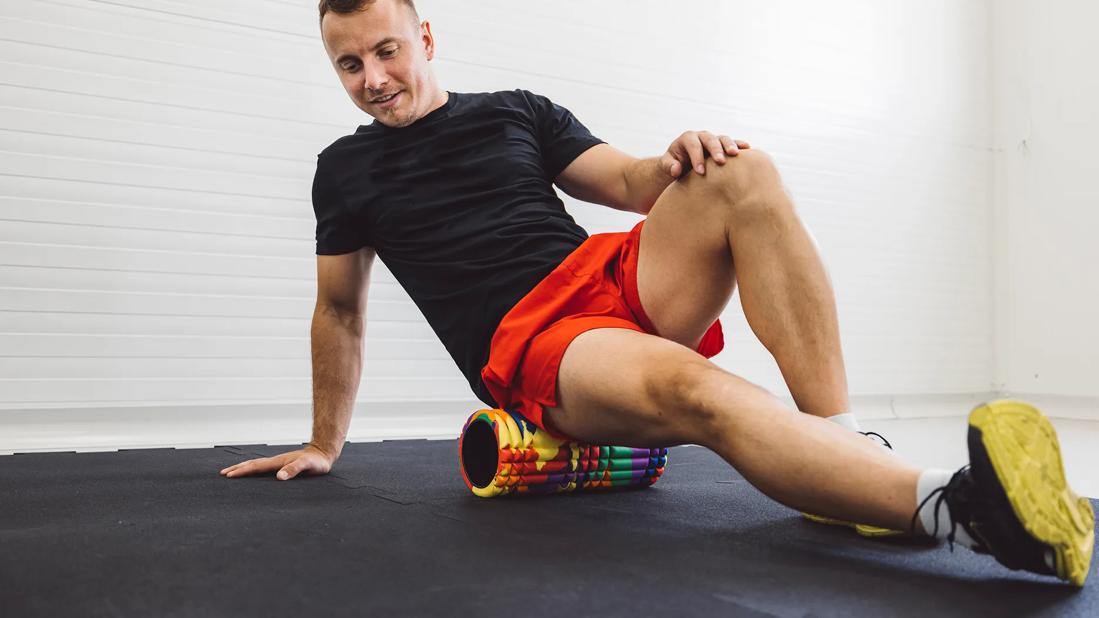Relieve a tight, achy and aggravated IT band, as well as hip and knee pain, with these at-home exercises

Your iliotibial band, or IT band, is a tendon that extends from your hip to your knee along the outside of your thigh. The thick band of connective fibers is the largest piece of fascia (connective tissue) in the human body. It’s also some of runners’ and cyclists’ biggest pain points.
Advertisement
Cleveland Clinic is a non-profit academic medical center. Advertising on our site helps support our mission. We do not endorse non-Cleveland Clinic products or services. Policy
That’s because overuse of your IT band can cause swelling and irritation. The pain can sideline even the hardiest endurance athletes, turning each step into an achy shuffle.
IT band stretches and exercises can help ease or even prevent injury, improve flexibility and strengthen key muscles, says physical therapist Shelley Krampf, PT, DPT.
We asked Dr. Krampf about stretches for tight, inflamed and aggravated IT band, as well as other ways to lessen the pains.
What should you do if your IT band begins barking? Dr. Krampf offers one word: STOP.
“Continuing the activity that led to the problem isn’t going to make it go away,” she stresses.
Athletes are at high risk for IT band injuries, like IT band syndrome and “runner’s knee.” That’s because repetitive use of your hips and knees from activities like running, biking and skating puts a lot of pressure on your IT band. So, giving your legs a break can make a big difference.
Here’s why:
“As you bend and extend your knee and hip, the IT band glides over the outside part of the knee. Repeating the motion over and over again slowly works to tighten your IT band,” Dr. Krampf explains.
As the tissue grows more taut, friction develops as your IT band begins to rub over your bony infrastructure. That rubbing leads to irritation and inflammation that can reveal itself as an intense and persistent pain in your knee or hip.
Advertisement
If your IT band is tight and hurting, rest is the first step in recovery. You can also apply ice to the aching area and take anti-inflammatory medication (like Advil® or Motrin®).
Targeted stretches can also help loosen a tight IT band. You can try:
Dr. Krampf walks through six specific stretches you can try to help loosen your tight IT band.
Let’s start with a word of caution: If you’re not used to foam rollers for releasing tight muscles and fascia, it can be ... intense.
Advertisement
So, take it easy with this one. And if the pain is too much, back off.
If your IT band continues to ache, Dr. Krampf suggests working with a physical therapist to find and address potential causes, like:
Something as simple as running the same route every day could even be a factor combined with overuse, Dr. Krampf notes.
But the bottom line is that any endurance athlete should always make their IT bands a focus.
“If you’re someone who runs or cycles a lot, pay attention to them and do your stretches,” Dr. Krampf advises. “Don’t wait to address your IT bands until they’re a problem. Make IT band stretches part of your routine.”
Advertisement
Learn more about our editorial process.
Advertisement

You can improve your athletic performance over time by breaking up your workout regimen into focused cycles

Shoulder rolls, hamstring stretches and calf exercises can all improve flexibility and endurance

Lower-intensity workouts can deliver high-quality health and fitness results

Incremental changes in your exercise routine can improve your strength and endurance over time

Understanding heart rate zones can help you tailor your workout to reach your goals

Increase the size of your muscles by bulking up on protein and focusing on slow, intense movements with progressive overloading

Low-impact exercises help you recover faster between sets, during cool downs and on rest days

Eccentric is slow and steady, while concentric is fast and controlled

Start having sex about 72 hours before ovulation, then at least every other day during your fertile window

Attachment theory suggests that your earliest relationships shape connections throughout your life

It isn’t a recognized mental health disorder, but research shows that problematic social media use can negatively affect your mental health, self-esteem and sleep